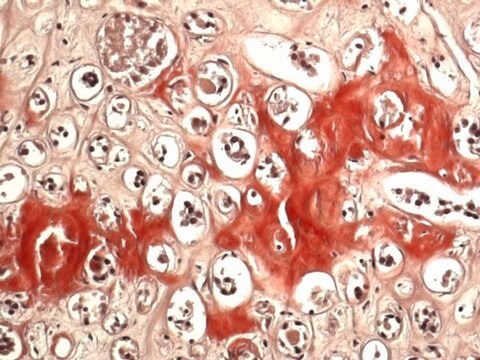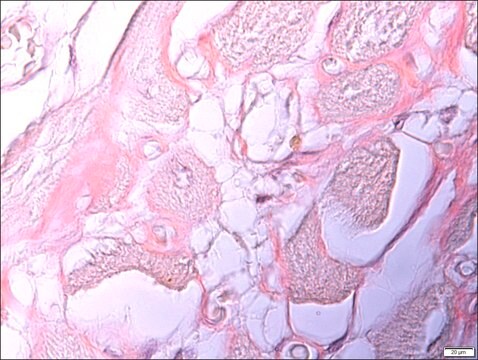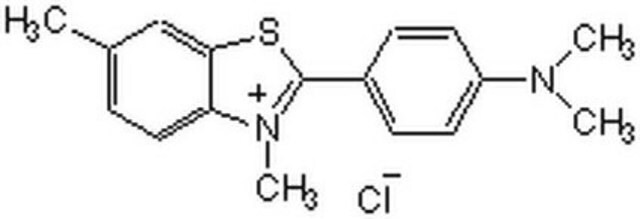HT60
Amyloid Stain, Congo Red
Synonym(s):
Puchtler’s Modification for Amyloid
Sign Into View Organizational & Contract Pricing
All Photos(2)
About This Item
UNSPSC Code:
41116121
NACRES:
NA.47
Recommended Products
shelf life
Expiry date on the label.
Quality Level
IVD
for in vitro diagnostic use
application(s)
hematology
histology
storage temp.
room temp
Principle
Amyloid protein is detected in tissue with Congo red, a metachromatic stain. Staining is intensified by pretreatment of tissue with alkaline sodium chloride.
Kit Components Only
Product No.
Description
- Congo Red Solution (kit only) 500 mL
- Sodium Chloride Solution, Alcoholic (kit only) 500 mL
- Sodium Hydroxide Solution (kit only) 2 x 12
related product
Product No.
Description
Pricing
Signal Word
Danger
Hazard Statements
Precautionary Statements
Hazard Classifications
Carc. 1B - Eye Irrit. 2 - Flam. Liq. 2 - Met. Corr. 1 - Skin Irrit. 2
Storage Class Code
3 - Flammable liquids
Flash Point(F)
57.2 °F - closed cup
Flash Point(C)
14.0 °C - closed cup
Choose from one of the most recent versions:
Already Own This Product?
Find documentation for the products that you have recently purchased in the Document Library.
J Grayson Richards et al.
The Journal of neuroscience : the official journal of the Society for Neuroscience, 23(26), 8989-9003 (2003-10-03)
Transgenic mice, expressing mutant beta-amyloid precursor proteins (betaAPPs), have lead to a better understanding of the pathophysiological processes in Alzheimer's disease (AD). In many of these models, however, the temporal development of cognitive decline and the relationship to Abeta deposition
Lei Wang et al.
PLoS biology, 6(8), e195-e195 (2008-08-08)
Protein aggregation is a process in which identical proteins self-associate into imperfectly ordered macroscopic entities. Such aggregates are generally classified as amorphous, lacking any long-range order, or highly ordered fibrils. Protein fibrils can be composed of native globular molecules, such
Samir K Maji et al.
PLoS biology, 6(2), e17-e17 (2008-02-08)
Amyloids are highly organized protein aggregates that are associated with both neurodegenerative diseases such as Alzheimer disease and benign functions like skin pigmentation. Amyloids self-polymerize in a nucleation-dependent manner by recruiting their soluble protein/peptide counterpart and are stable against harsh
Tsung-Ting Tsai et al.
Journal of orthopaedic surgery and research, 12(1), 194-194 (2017-12-23)
Dialysis-related destructive spondyloarthropathy caused by beta-2 microglobulin (β2M) amyloid deposits in intervertebral discs is a major burden for patients undergoing long-term dialysis. This study aimed to quantify the presence of β2M amyloid deposits in the intervertebral disc tissue of such
Antje Willuweit et al.
Frontiers in neuroscience, 15, 699926-699926 (2021-10-22)
Alzheimer's disease (AD) is characterized by formation of amyloid plaques and neurofibrillary tangles in the brain, which can be mimicked by transgenic mouse models. Here, we report on the characterization of amyloid load in the brains of two transgenic amyloidosis
Protocols
A stem cell culture protocol to generate 3D NSC models of Alzheimer’s disease using ReNcell human neural stem cell lines.
Our team of scientists has experience in all areas of research including Life Science, Material Science, Chemical Synthesis, Chromatography, Analytical and many others.
Contact Technical Service









